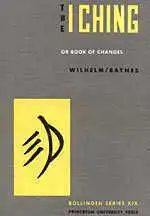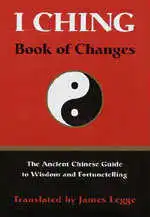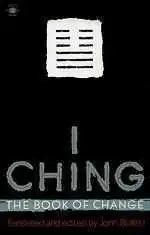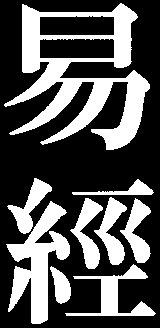I Ching , The Book of Change, is nearly 3,000 years old. Its 64 chapters have mainly been used for divination since that distant origin, and it still is. There are many English translations of the book. Here's a few of the most prominent ones, and some more information about the book and its history.
The origin of the I Ching (also spelled Yi jing) is unclear because of its high age. It probably got its present form around 800 BC, but its method of divination may well be hundreds of years older than that. Initially it was called Chou I (Zhou Yi), The Changes of Chou, which was the name of the dynasty during which the book emerged.
The word chou means circle or something revolving, as well as universal. So, what's implied with the name of the book is the statement that everything changes, always. This change is described by the dynamics between yin and yang, the famous polarity of ancient Chinese cosmology.
Yin and yang are also the building blocks of the 64 hexagrams of the book, in what could very well be described as sort of a binary system: each of the six lines of a hexagram can be either solid (yang) or broken (yin). That gives a total of 64 possible combinations in hexagrams.
Still, I would claim that it makes more sense to see the hexagrams as combinations of two trigram (three lines each). There are eight trigrams, each representing a basic force of nature. When they are arranged one above the other, the meaning of that hexagram starts to emerge as if by itself. I discuss that more on this webpage:
As for the name of the book, it was changed to I Ching in 136 BC by a Chinese emperor who thereby included it among the prominent classics of Chinese literature. The word ching is best translated as classic. It's sort of an honorary title for a book, signifying that it belongs to the all-time Chinese cultural treasures.
It took quite a while for the book to reach the Western world. It was none other than the German philosopher Leibniz who wrote the first known Western commentary of it in 1703, pointing out its binary system. He had learned about it from Jesuits stationed in China. That led to some debate among philosophers, which played its role in making the book known to Europeans.
The first complete translation of the I Ching was to Latin in the 1730s by the Jesuit missionary Jean-Baptiste Régis. He lived in China for 40 years until his death in 1738. In the 18th century, Latin was still well known among intellectuals, so the book could be read by plenty — depending on how many copies were made of it. Probably not that many, but more so with a German edit made in 1864.
A much more famous translation — into English — was done by James Legge in 1882. A few years before that, in 1876, Thomas McClatchie had published a translation that has not stood the test of time equally well. The first French version was that by the diplomat Paul-Louis-Félix Philastre in 1885.
The most prominent version, and still in print, is the translation into German by Richard Wilhelm in 1924, with a foreword by the psychoanalyst C. G. Jung. Wilhelm's version of the I Ching has in turn been translated to many other languages, also English in 1950.
Of course, several additional translations have been made, especially in the last 50 years or so, as the book's popularity has increased.
Most translations have been done by Sinologists, for obvious reasons. They tend not to be that enthusiastic about the book as a utility for divination, although that's most definitely what it was set out to be already almost 3,000 years ago, when it was conceived. But they have no trouble finding other values in it, mainly the many insights into Chinese cosmology and philosophy at the time, as well as its revelations about human mentality and life that long ago and far away.
The book's wide popularity today, though, definitely stems from an interest in it as a tool for divination. Countless readers have found that this old Chinese text is still able to speak directly to them — even in a way that they feel has relevance for their future.
English Translations
Here are three English translations that are well known and respected also by scholars. New translations have emerged during the last few decades, so I might expand this list eventually.
But I see no immediate hurry, at least not for those who want to use the book in divination. For that, any one of these three will do fine — probably for a long time on. That's not only because they are competent works, but also because in divination it's not so much about the exact wording of the text. More important is what the reader is able to extract from it.
Richard Wilhelm

Richard Wilhelm (1873-1930) was a German sinologist, who translated several of the Chinese classics into German. His versions with their learned comments were soon published also in English, as well as many other languages. Rickard Wilhelm's version of
I Ching is still regarded as one of the most competent and trustworthy. It has a foreword by the famous psychoanalyst C. G. Jung, which is also very readable. Jung asks I Ching about I Ching...
Click on the image of the book to see it at Amazon.
James Legge

James Legge (1815-1897) was a Scottish sinologist who translated a great number of Chinese classics into English. His version of
I Ching is still in print and widely used. Like Wilhelm's version, it's a substantial and learned work, including many explanations and elaborations on how the Chinese classic should be understood.
Click on the image of the book to see it at Amazon.
John Blofeld

John Blofeld (1913-1987) was a British writer on Asian religion and philosophy. His version of
I Ching, puhblished originally in 1965, is one of my favorites. It's very clear and straightforward. The book is far from as massive as the two above, but it contains what should be there and in elegant writing. An excellent choice for those who want to put their copy of
I Ching into use.
If Blofeld makes you think of the master villain of the James Bond stories, you're not completely off. John Blofeld belonged to the same club as Ian Fleming, and his father's name was Ernst, just like the Bond figure.
Click on the image of the book to see it at Amazon.
Use the Facebook field on some of these web pages to comment the I Ching or this website.







